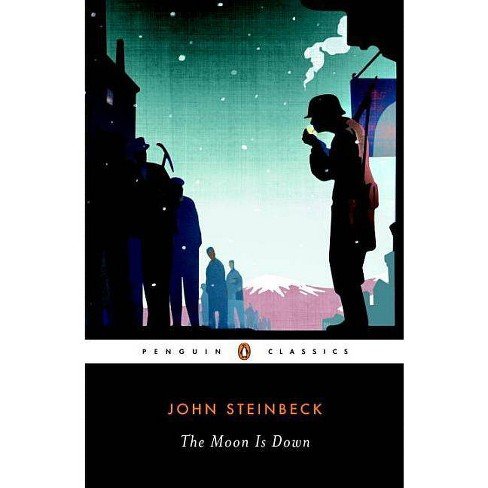The Moon is Down by John Steinbeck
If you have ever needed a book that spoke to both the oppressed and the oppressor, the invaded and the invader, The Moon is Down by John Steinbeck is the book you need.
The Moon is Down is about a small village that becomes occupied by the enemy during World War II. The villagers are confused and forced into servitude as the soldiers move in. Mayor Orden struggles to keep the peace and support the people while soldiers are billeted at his house. Tensions rise, resolves break, and punishment endures.
The people don’t like to be conquered, sir, so they will not be. Free men cannot start a war, but once it is started, they can fight on in defeat. Herd men, followers of a leader, cannot do that, and so it is always the herd men who win battles and the free men who win wars.”
-- Mayor Orden to Colonel Lanser, Page 111
I firmly believe that this book should be on every shelf. Written during World War II, John Steinbeck crafted this book from the stories of refugees from Norway, France, Belgium, Denmark, and the Netherlands. When this story was published in 1942, Steinbeck strategically left the village and the invaders unnamed.
This allowed for people in all occupied countries to bond with this book. And bond they did. The Nazi party became adamant about keeping this book off the shelves. They felt it portrayed them as weak and weakness was not tolerated. Needless to say, publishing prevailed and copies of The Moon is Down were spread across Europe and America.
That alone is a great reason to read this book. But I also loved that this book represented humanity and the struggle to be good. The soldiers were “evil” but were still human beings with their own struggles. This book focuses the reader on having empathy for others and understanding another’s situation.
It also fills the reader’s heart with hope for the occupied villagers. They didn’t sit back and take the punishment that was bestowed but instead found ways for their voices to be heard. They rallied together and held fast to their beliefs and their community.
The content in this book is amazing, but there is more to love! Steinbeck writes in such a poetic way. His sentences are often short but are always clear. He infuses his writing with metaphors and imagery that paints an elegant picture vividly and clearly in my mind.
The Moon is Down is the epitome of empathy, humanity’s struggle for good, and a desire to stand true in the face of adversity. It easily became part of my Top 10.
Teacher Recommendation:
I would recommend this book for all adults and high schoolers (9th-12th). This is a great book to use for discussions on empathy and life in general. It can be applied to current events and various wars throughout history.
This book also allows a great opportunity to study Steinbeck’s writing style and bring imagery, metaphors, and short, concise reading into your students’ grasp. This novel is short enough to be used for a highly interactive and engaging novel unit!
Want to teach The Moon is Down in your classrooms? Check out my Free and Deluxe Teaching guides that tell you exactly how to do this in my Teachers Pay Teachers store!
